The American businessman Bernard Baruch said, “Most of the successful people I’ve known are the ones who do more listening than talking.” Now, this is a wildlife photography blog, not a life coaching session, but it is sensible to reflect on the idea that we have two ears and one mouth for a reason.
What does this have to do with my photography? Well, with the arrival of summer on my local patch, much of the wildlife seemed to exit stage left. When struggling for ideas, taking the time to listen to a stranger led me to a location for a species I have wanted to work with for a long time.
It started with a heron
Let me start at the beginning. I spotted this grey heron from the path by the river. I happened to glance over the rusted metal railing and caught a glimpse of its long yellow bill and glaring eye that seemed to firmly say “keep walking”. And I did, for a few steps anyway.
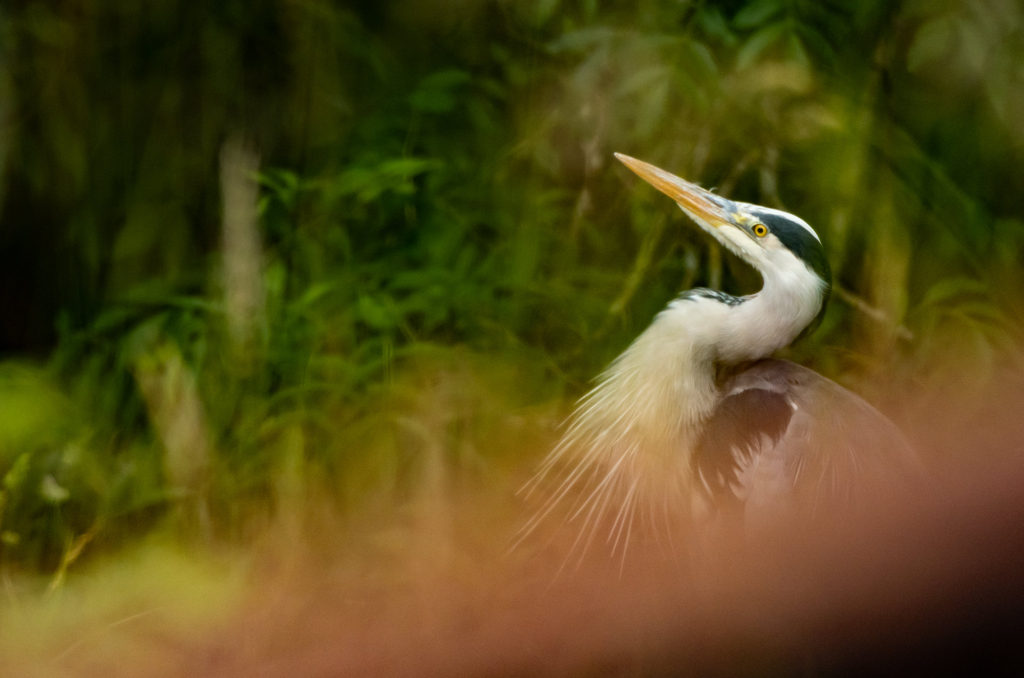
I waited until partially obscured by the tangle of brambles and turned to point my lens back at the bird, focusing through the foliage and the rust. The heron knew I was still close by, but I think it tolerated me because I was slightly less annoying than the lesser black-backed gull that kept mobbing it. The heron kept glancing up to the sky, waiting for the next swoop, and I kept shooting.
That is when I heard a voice behind me. A lady had seen me point my lens and that had drawn her attention to the heron, which she would have otherwise missed. A photographer too, although without her “big camera”, she wanted to grab a few images. We chatted and shared sightings. As an introvert, this has been something the past year on my local patch has taught me to do. If I open up, other people do too. Due to carrying my camera and wearing a smile, I now know more people in my local community than I did this time last year. I’m not sure my local knowledge was of any use to her but what she shared in those few moments was invaluable to me; two new locations: a kingfisher nest and a fox den. The former has already been a source of much enjoyment and a few decent images. The latter I am keeping up my sleeve for later.
I left her with the heron undisturbed, but I hope to see her again soon. Maybe I will be brave enough to show her my images. Either way, I will thank her for that chance encounter that led to so much more.
Meeting the king of the river
The images of a male kingfisher in this blog, perched and waiting to go into the nest, were captured only a few days after I found out about the location.
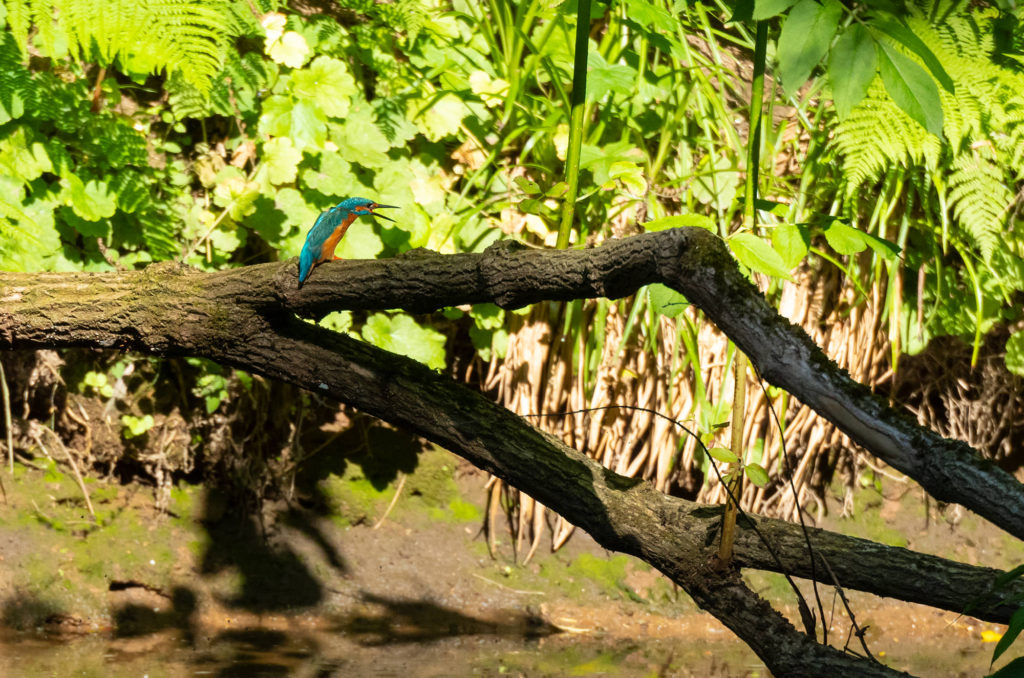
The parents were visiting the nest at regular intervals. I was told that, as long as I had the patience to stand and wait, they would make an appearance. I should point out that I was standing on a tarmac path at the entrance to a busy public park to capture this image, so there was no risk of disturbing the nest.
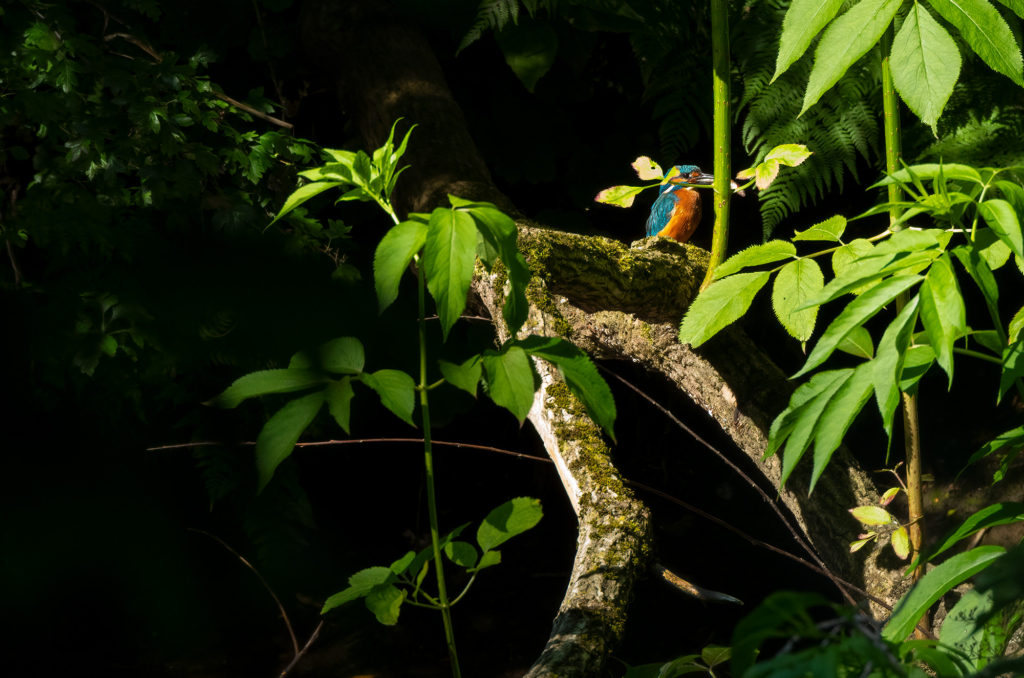
The only tricky part was trying to position myself to shoot through the vegetation while also being in the best position for where the kingfishers would perch. There was guesswork involved for the first few visits before I became used to their behaviour and the best angles to capture the images I wanted.
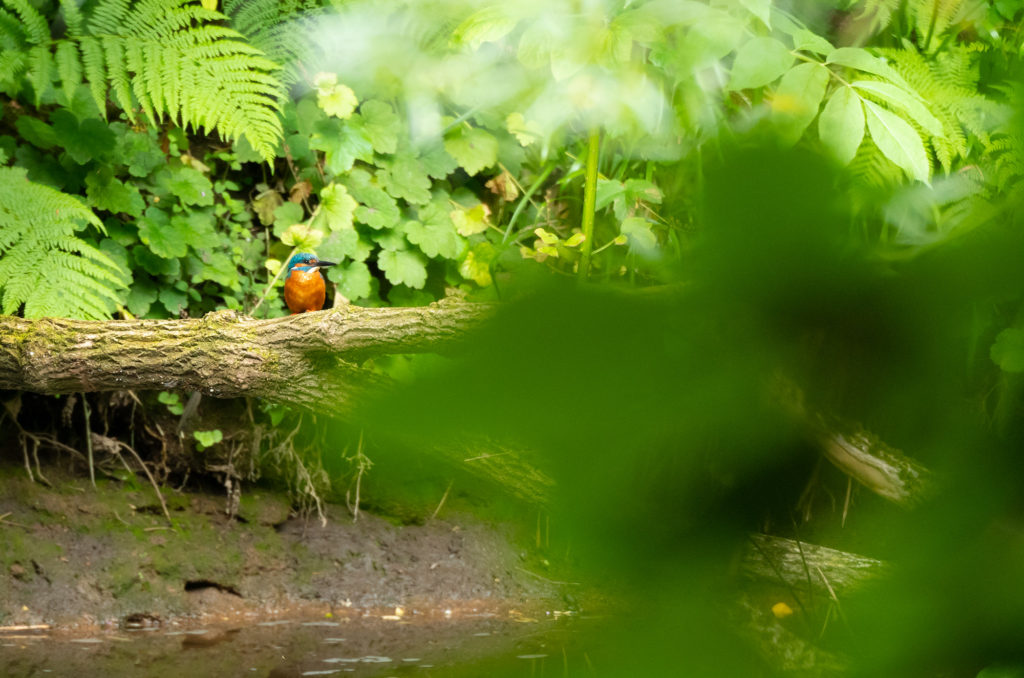
I particularly like this location because I am not able to get any closer to my subject. This forces me to capture images with more of the bird’s environment visible. As this is an aspect of my photography that I want to improve, these kingfishers have been the ideal challenge on my local patch.
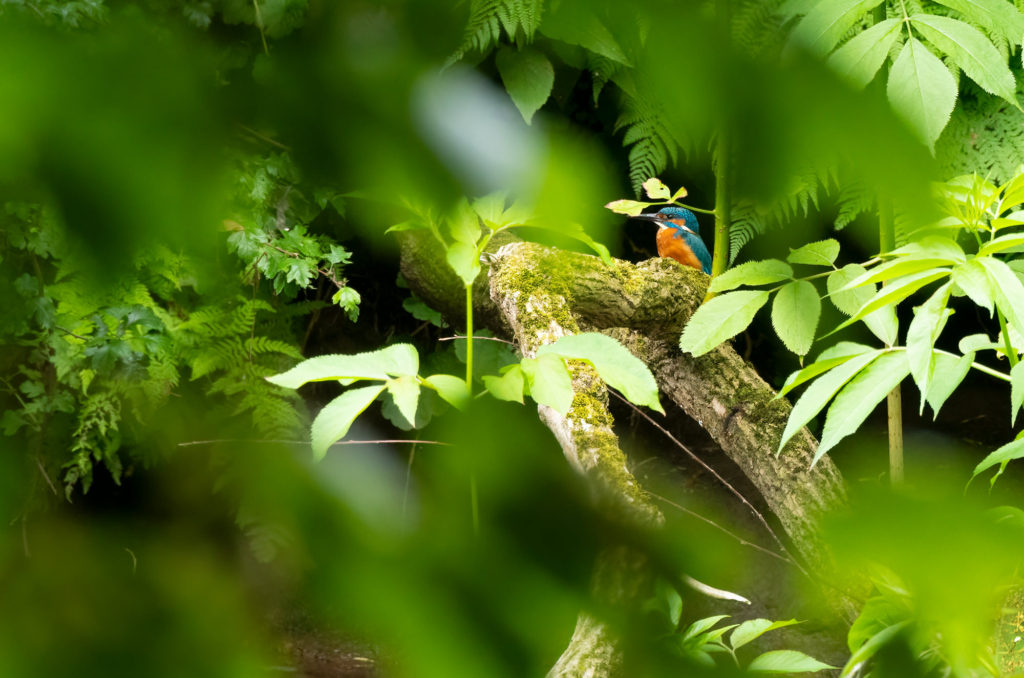
Birdsong basics
And while we are on the subject of listening, if you want to improve your opportunities for photographing birds, study their songs and calls. I took a fantastic course with the British Trust for Ornithology but there are also plenty of other resources on YouTube with people like Lucy Lapwing producing handy hints for recognising and remembering different species. Not only does learning songs and calls improve your identification skills, but it can also lead to opportunities for bird photography that you would not otherwise have.
The image below of a willow warbler is an example of one of those opportunities. I spotted a small, light-coloured bird fly into a tree a good distance away from where I was walking. I had no idea if it was still in the tree when I got closer until I heard a burst of song. I recognised it instantly as a willow warbler and I was able to quickly get into a position to photograph it while it continued to sing. To be honest, if it hadn’t been in full voice, I could have confused this bird with a chiffchaff. The melancholy tumbling warble meant I could be confident in my identification.
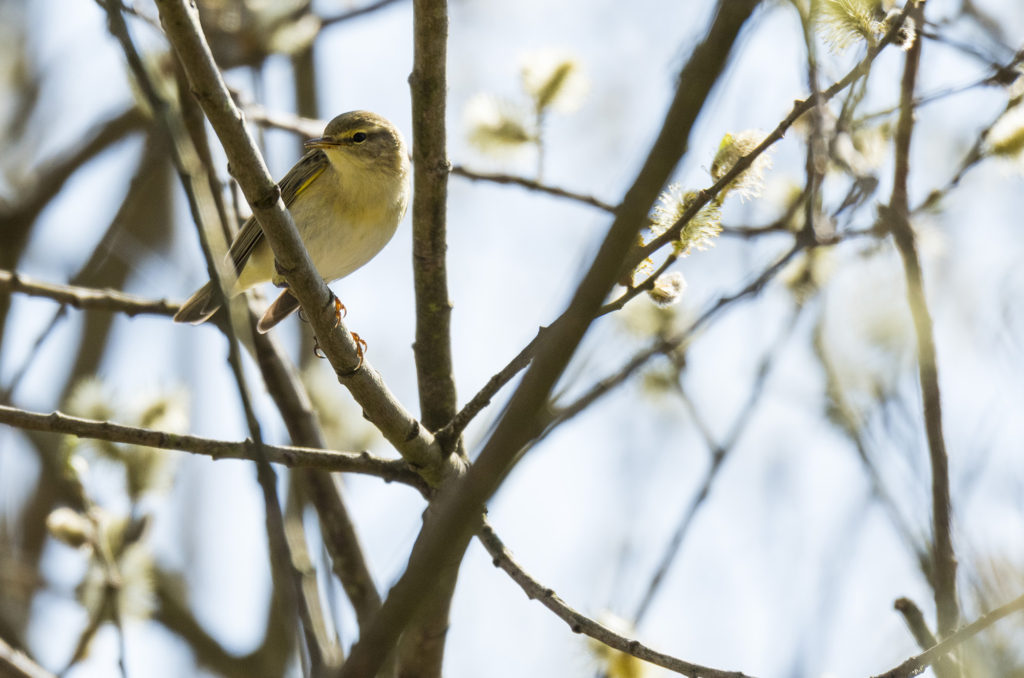
Willow warblers are migratory birds that start arriving in the UK in March to breed. These dainty birds are unusual in that they moult all their feathers twice a year, at both their wintering and breeding grounds.
From listening to watching
After the chance encounter that led to the kingfishers, I decided to film a short video to share a few of my top tips for successful nature photography on your local patch during the summer months, which you can watch below.
Please visit my new YouTube channel and let me know what you think in the comments. As this is a new channel for me, I would be grateful for any likes and subscribes!

